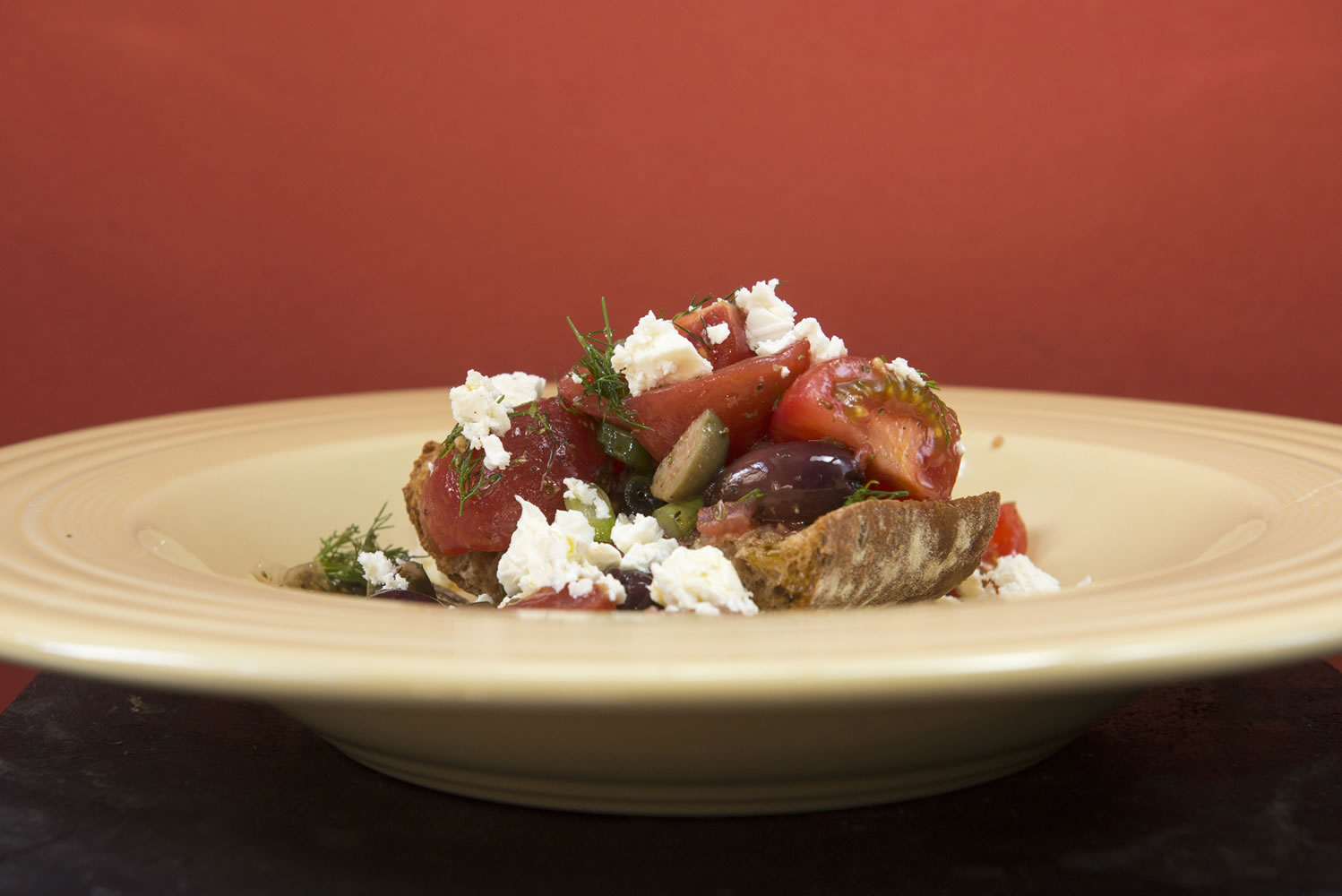The Greek salad is a pretty simple affair that represents Mediterranean cuisine at its best. Healthful, refreshing and balanced, every bite of what the Greeks call “horiatiki salata” invites a sensation — be it the saltiness of the olives and feta cheese, the sweetness and acid of the tomatoes, the bite of the onions, the richness of olive oil or the herbaceousness of Greek oregano. Add to that the vibrancy of the ingredients’ colors, the contrasting textures and the fact that the salad requires so little to put together, and the sum total is unfettered satisfaction.
As would be the case with a dish that no doubt was made in ancient times, opinions run strong about which deviations from the basic recipe are allowable.
Even the olives can be a non-starter.
“It was forced into my head from an early age by my father’s father, who was from Kalamos, that a horiatiki salad was only tomato, cucumber, white onion, olive oil, feta cheese, salt and really good oregano,” says chef John Manolatos of Cashion’s Eat Place in Washington. “No additional acid at all, no peppers and definitely no olives. That was a bastardization.”
Manolatos pretty much adheres to that. In the summer, he combines heirloom tomatoes at their peak with fresh oregano, Dodoni feta cheese and Lakonian extra-virgin olive oil made from kalamata olives, the kind often found in horiatiki iterations.



